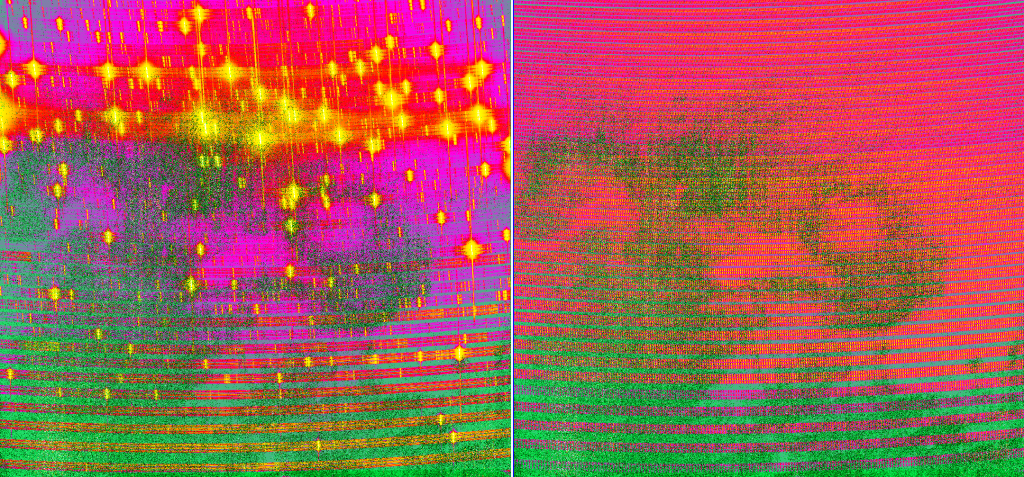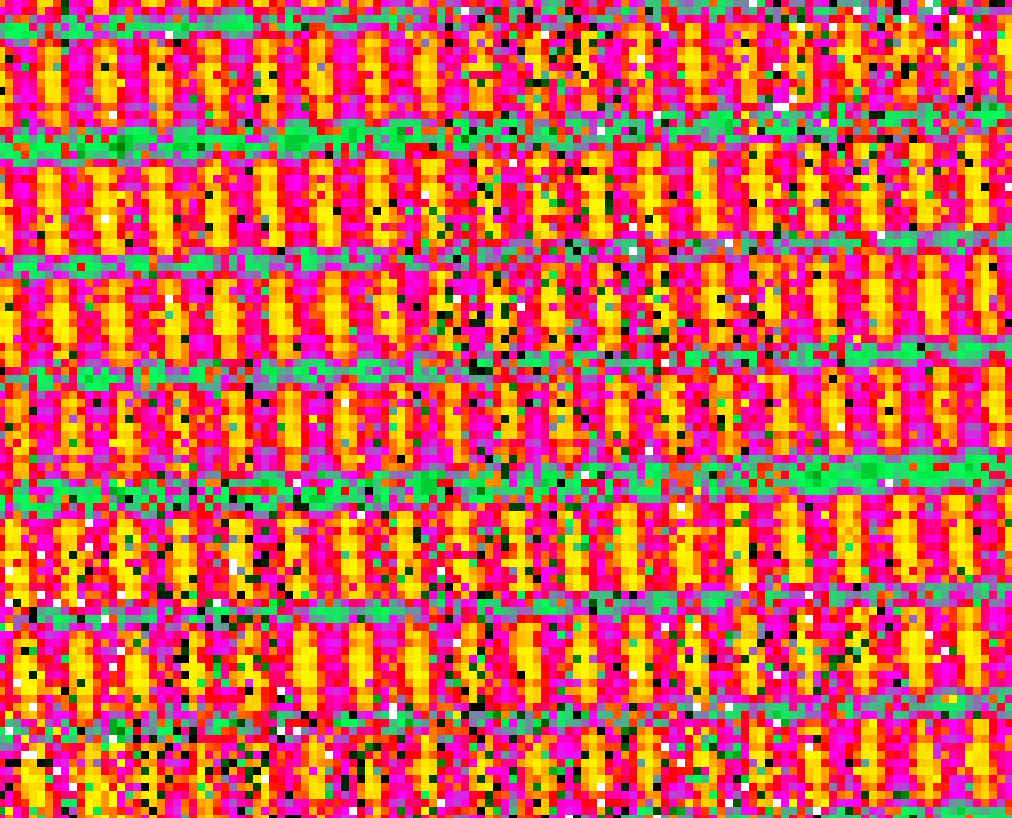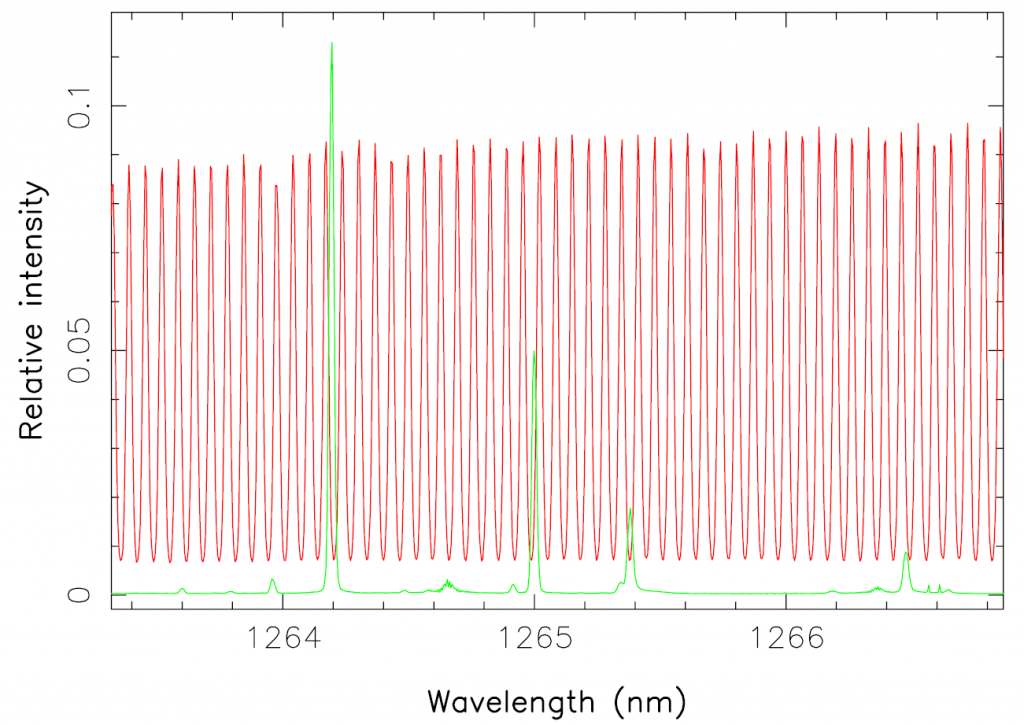2017 June: Perfect focus for SPIRou
Perfect focus for the SPIRou spectrograph
Shielded from the Toulouse heatwave of these last weeks, the SPIRou spectrograph initiated its 3rd cryogenic cycle and reached perfect focussing in early June, after 2 weeks of cooling down and thermal stabilization.

The échelle spectra that SPIRou produces when fed with light from ThAr & Une (Thorium-Argon and Uranium-Neon) hollow cathode calibration lamps, or from the Fabry Perot etalon, are now very sharp. They reveal all details of the slit profile that the SPIRou pupil slicer is generating, both for the twin science fibers and for the reference fiber.
By using a Hartmann mask to alternately occult the upper and lower half of the beam within the spectrograph, we can accurately measure how close SPIRou is from the best focus. We find that the spectral lines of these two Fabry Perot spectra perfectly coincide with each other, indicating that SPIRou reached optimal focus after only 2 previous cryogenic cycles. The spectral resolving power we obtain is slightly lower than our goal (of 75,000), but consistent with that expected with the test detector we are currently using (featuring larger pixels than the science detector to be used once SPIRou gets to CFHT).
From now on, SPIRou is entering a first period of acceptance tests, implying extensive use of the instrument to obtain preliminary assessments of how well all technical specifications and science requirements are met, and to unveil potential issues that the instrument may still exhibit. Early August, the spectrograph will then be reopened for a final round of fine tuning and component upgrades, before starting its last cryogenic cycle at IRAP / OMP during which the full series of acceptance tests will be carried out in order to get green light for shipping to CFHT.
SPIRou acceptance tests are handled by Andres Carmona from IRAP / OMP, with regular participation from the core science team, including Xavier Delfosse from IPAG, Guillaume Hébrard from IAP, Claire Moutou from CFHT and Jean-Francois Donati from IRAP / OMP. Data analysis is carried out with dedicated data reduction software (DRS), involving people from OHP / LAM (Isabelle Boisse and Melissa Hobson) and UdeM (Etienne Artigau) under the supervision of François Bouchy from OHP / LAM.




